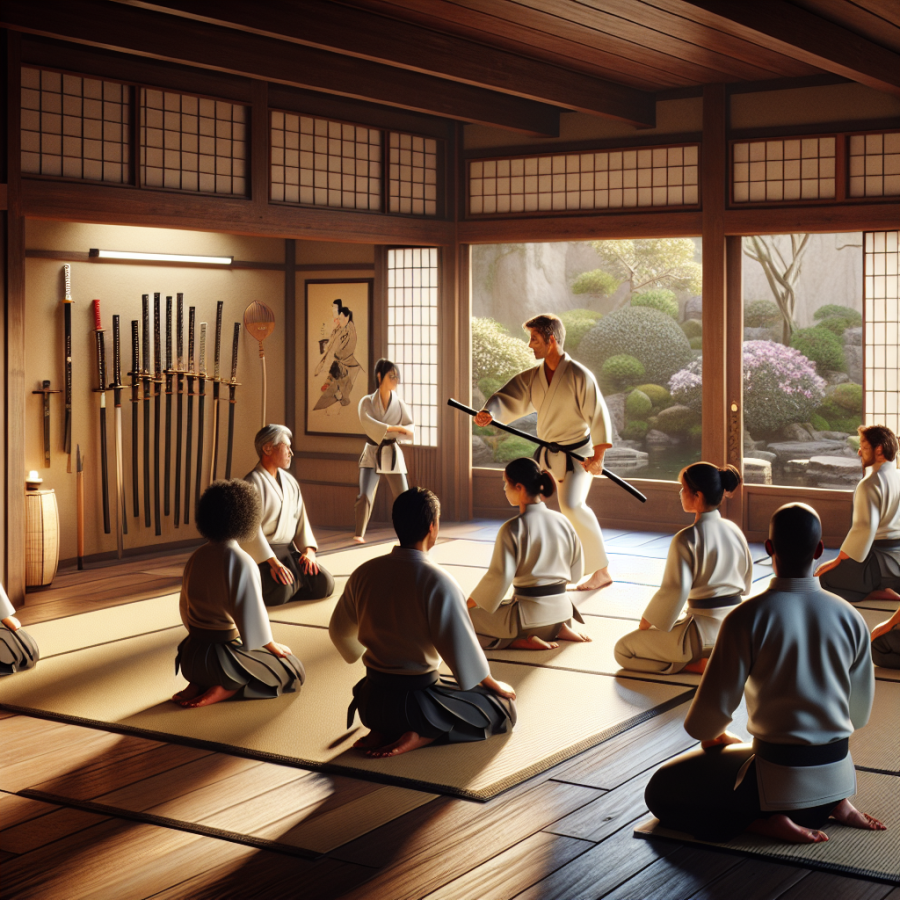Unveiling the Martial Legacy: A Journey Through Bujinkan's History
Unveiling the Martial Legacy: A Journey Through Bujinkan's History
Bujinkan, a martial art system that has captured the interest of practitioners worldwide, is the modern custodian of nine ancient Japanese martial arts schools. These schools, some of which can be traced back to over a thousand years ago, are collectively known as ryuha.
The roots of Bujinkan extend deep into the feudal era of Japan, a time where warrior skills were not just prized but essential for survival. The founder of Bujinkan, Masaaki Hatsumi, was born in 1931 and became a student of Toshitsugu Takamatsu, a man often referred to as the "last true ninja" because of his comprehensive knowledge and skill in ninjutsu and other traditional Japanese martial arts. It was from Takamatsu that Hatsumi inherited the grandmaster status of the nine schools in the 1970s, amalgamating them into the Bujinkan system.
Each of these nine schools has its unique characteristics, but they all share the underlying principles that form Bujinkan's philosophy. These schools are:
1. Togakure-ryu Ninpo Taijutsu
2. Gyokko-ryu Kosshijutsu
3. Kuki Shinden-ryu Happo Bikenjutsu
4. Koto-ryu Koppojutsu
5. Shinden Fudo-ryu Dakentaijutsu
6. Takagi Yoshin-ryu Jutaijutsu
7. Gikan-ryu Koppojutsu
8. Gyokushin-ryu Ninpo
9. Kumogakure-ryu Ninpo
The Togakure-ryu school is perhaps the most closely associated with what many conceive of as "ninjutsu." It emphasizes stealth, espionage, and surprise tactics. Conversely, schools such as Gyokko-ryu and Koto-ryu focus more on bone-breaking strikes and strategic combat, which can be considered more direct forms of confrontation.
Throughout the history of the nine traditions, the transmission of knowledge has been a pillar of their survival. This transmission has often been shrouded in secrecy, with techniques and teachings being passed down from one grandmaster to the next in a very select lineage.
Read also:
Uncovering the Latest Victories in Golf: Who Won?
Mastery of the Elements: Training Techniques and Philosophies in Bujinkan Martial Arts
Delving deeper into the world of Bujinkan, it becomes apparent that the mastery of elements is not only foundational but quintessential in understanding and executing the various techniques and philosophies that underpin this ancient martial art form. Bujinkan does not relate to the classical elements in a literal sense; rather, it refers to adapting to and utilizing various energies and conditions one might encounter.
Training in Bujinkan martial arts is structured around the utilization of natural movement and the philosophy of 'Taijutsu', which emphasizes the importance of body skills and dynamics. This is coupled with understanding distance, angle, and timing in combat. The principle of 'Sanshin no Kata', or the three hearts/forms, embodies the essence of these teachings, focusing on the mind, body, and spirit to harmonize an individual's energy with that of the universe.
The elements are also conceptualized through the 'Kihon Happo' and 'San Shin no Kata' drills, which serve as the backbone of Bujinkan training. These exercises are not merely physical movements but are also deeply rooted in the practitioner’s personal growth and spiritual development. By practicing these forms, a student of Bujinkan learns to blend with the force of an attack and redirect it, reminiscent of the fluidity and adaptability of the elements.
Moreover, instructors in Bujinkan stress the importance of 'Shuhari' – to obey, to digress, and to separate. This philosophy mandates that a student initially follows the teachings rigorously. In the intermediate stages, they begin to explore the depths of these techniques, adapting and modifying them as their understanding matures. Eventually, they achieve a level of mastery that allows them to innovate and evolve beyond the established teachings, much like how elements combine and change in nature.
The elements are also metaphorically embraced in Bujinkan's strategic teachings through 'Kyojitsu Tenkan Ho' – the method of interchange between reality and falsehood. By understanding how to manipulate perception and intention, a practitioner can create openings and advantages in combat, much as a strategist would use the terrain and conditions to their benefit.
Furthermore, the concept of 'Tenchijin' – heaven, earth, and man – is another philosophical tenet that imparts students with the wisdom to understand their place in the cosmos, the environment, and within themselves.




